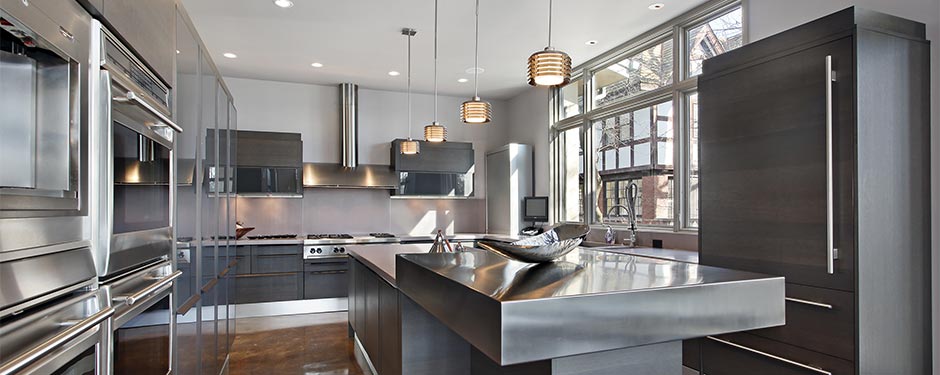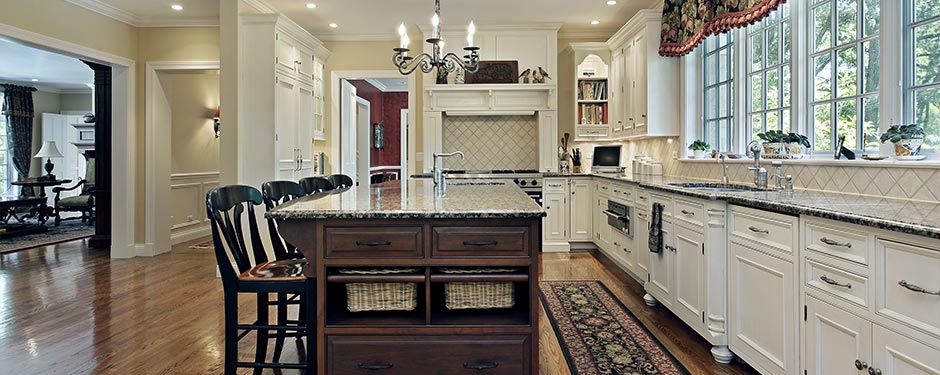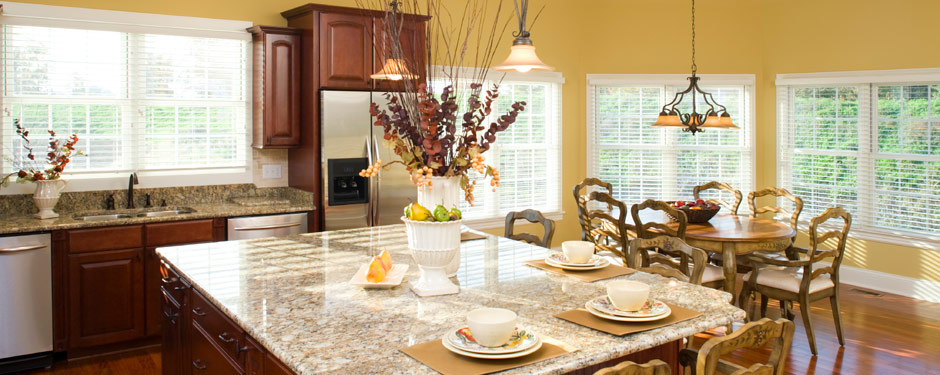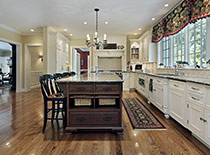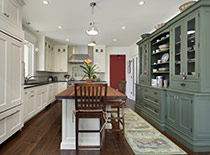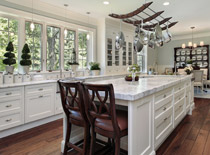Kitchen Remodeling Find a Trusted Contractor to Help
Which Kitchen Countertop is Right For You?
Gone are the days of choosing from a few color chips and expecting nothing more than a countertop that matches the room. Choices are now so vast and varied that selecting the right countertop requires a bit of homework.
With a short course in Countertops 101, you can find your way through the maze and choose one that’s right for your home and budget.
The right countertop pulls the whole kitchen together.
Don’t Overlook Laminate
Advances in technology have brought a whole new generation of laminate countertops to the market. Homeowners are no longer limited to solid colors and noticeably faux wood grain; the color and design textures are vast, including realistic-looking stone patterns. Laminate remains one of the least expensive options.
Laminate is essentially plastic. As such, it cleans up easily and isn’t as prone to stains as some other options. The downside is that it scratches, melts and burns, so you can’t cut directly on it or take a hot pan off the stove and set it down without using a hot pad.
Wood Isn’t Just for Furniture
Not your ordinary countertop, wood is more sensible in a kitchen than you might imagine. Unsealed wood, such as butcher block, naturally resists bacteria. It’s maintained with pure mineral oil, which is sometimes mixed with melted beeswax.
If butcher block is too costly, there are other wood options. These must be sealed with urethane. A remodeling professional can fashion a serviceable and good-looking countertop from wood planks or a sheet of furniture-grade plywood.
Sturdy, Dependable Tile
Tile is a mid-priced kitchen standard, and the materials only get better and more attractive every year. Tiled countertops are built on-site, which is a job for your kitchen contractor. The foundation is made from plywood and fastened to the cabinets, and the tiles are set afterward.
The benefits of tile include heat resistance, durability, ease of cleaning and a wide range of colors, styles and textures. The downside includes grout lines that can stain and more damage from impact than some other materials. Brittle tile can crack from dropped pans.
Ask your contractor before buying costly materials that might not suit your home.
Granite and Other Natural Stone
Natural stone countertops have risen to the top of in terms of popularity. Whether you prefer the creamy white of marble, the dark, chalkboard appearance of some soapstone or anything in between, natural stone is an upgrade that you can be proud of.
Stone resists heat and impact and lasts for generations, but common household cleaners are a no-no. Use special cleaners for stone. The downside includes extreme weight, which takes it out of the scope of a DIY project, and a hefty price tag.
Composition stone, a lower-cost alternative, is fabricated from fragments of natural stone and a resin binder.

Stains and polishing can transform concrete into a dead ringer for natural stone.
You’d Never Know it’s Concrete
Concrete countertops entered the scene as humble, durable surfaces. Skilled craftsmen have since developed staining and inlay techniques that turn the ordinary into something exquisite.
Heat and impact resistance are a plus, but concrete countertops must be fabricated and installed by a professional. A simple countertop isn’t terribly costly, but a showpiece with copper inlays and special stain techniques can cost thousands. End
Carole Oldroyd is a freelance writer whose work focuses on home improvement and law.


